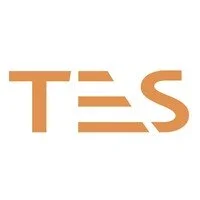ES Engineering Supervisor
Initial / Recert
Course Summary
This course is designed to train persons who have been nominated by their line manager/sponsor to enable them to attain the Engineering Supervisor (ES) competence.
The ES competence is required to be held by anyone who is required to set up and manage a worksite within an engineering possession on the rail infrastructure under the direction of a Person in Charge of Possession (PICOP). This includes the management of on and off-tracking On Track Plant (OTP) and train movements within the designated worksite.
The ES course will take delegates through the procedures as set out in the Rule Book; Handbook 12 (Duties of the engineering supervisor) and Handbook 13 (Duties of the person in charge of the siding).
The course includes the importance of using the correct communication protocols and adopting the appropriate behaviours to be able to carry out this role safely and effectively.
Course Aim
The aim of the course is to provide delegates with the skills and underpinning knowledge required to undertake Engineering Supervisor duties in line with the Engineering Supervisor unit of competence.
Pre-requisites & Requirements
Delegates must:
Must be a minimum age of 18
Must hold a minimum of medical level 2 (must have normal colour vision).
Must hold a valid Sentinel Track Safety Card endorsed with PTS (not under learning support), and full IWA or COSS.
If no IWA held, COSS must not be in Probationary status (P).
Additional Information
All PPE must meet the requirements of NR/L2/OHS/21 and RIS-3279-TOM and as a minimum be equipped with:-
High visibility upper body clothing with reflective tape, with Sentinel Sponsor Logo
High visibility lower body clothing with reflective tape
A safety helmet with Sentinel Sponsor Logo
Safety footwear to support ankle and protective toe cap
Suitable safety eyewear
Suitable safety gloves
What Does an Engineering Supervisor Do?
The Engineering Supervisor (ES) is a vital leadership and safety role responsible for overseeing and managing all engineering activities within a worksite on the operational railway. They act as the primary interface between the planning stages and the on-the-ground execution of complex engineering tasks, ensuring work is carried out safely, efficiently, and to the required standards.
What is an Engineering Supervisor?
An ES is a highly experienced and competent individual who takes direct responsibility for the safe and correct execution of specific engineering work on the track or associated infrastructure. They are typically responsible for a specific work package or task within a larger possession or work site, overseeing the teams performing the physical work. While a COSS manages the safe system of work to protect against trains, the ES focuses on the safe and correct completion of the engineering task itself.
Key Duties and Responsibilities of an ES:
The ES role demands strong leadership, technical expertise, excellent communication, and meticulous planning to deliver engineering outcomes safely. Their duties typically include:
Task Management: Directing and supervising the work group to ensure engineering tasks are completed according to the work plan, technical specifications, and quality standards.
Resource Management: Managing the allocation of personnel, plant (machinery), and materials required for their specific work package.
Technical Compliance: Ensuring all engineering work complies with relevant engineering standards, Network Rail specifications, and company procedures.
Quality Assurance: Overseeing the quality of work performed and conducting checks to ensure it meets required standards.
Safety Briefings: Delivering comprehensive safety briefings (often in conjunction with the COSS) specific to the engineering tasks being undertaken.
Risk Management: Identifying and managing risks associated with the engineering work itself, beyond the basic safety from train movements.
Communication & Coordination: Liaising with the Person In Charge (PIC), COSS, SSOWP, and other ESs to ensure seamless coordination across the larger worksite.
Problem Solving: Addressing and resolving technical or logistical issues that arise during the work.
Reporting: Providing accurate progress reports and documentation of completed work.
Where an Engineering Supervisor can work within TES:
The ES competency is absolutely core to TES's project delivery, as it underpins the effective execution of all engineering works. ESs are integral to:
Permanent Way (P-Way): A primary area, overseeing track renewals, re-railing, re-ballasting, stressing, S&C (Switches & Crossings) installation, and major track maintenance.
Electrification (OLE / 3rd Rail): Managing the installation, maintenance, and renewal of overhead line equipment or third rail systems.
Technical Services: Supervising specialised engineering tasks such as intricate signalling installations, bridge repairs, or other infrastructure enhancements.
Project Delivery Teams: Essential for leading work packages within large, complex rail infrastructure projects.
Site Management/Operations: Senior ESs may progress into broader site management or operational leadership roles, overseeing multiple engineering teams.
Let’s Learn Together
Interested in our NSAR Gold Standard team training your staff?
Fill out some info and we will be in touch shortly!
We can't wait to hear from you!
Explore more of TES
Want to explore more of what TES have to offer? Use the search function below

